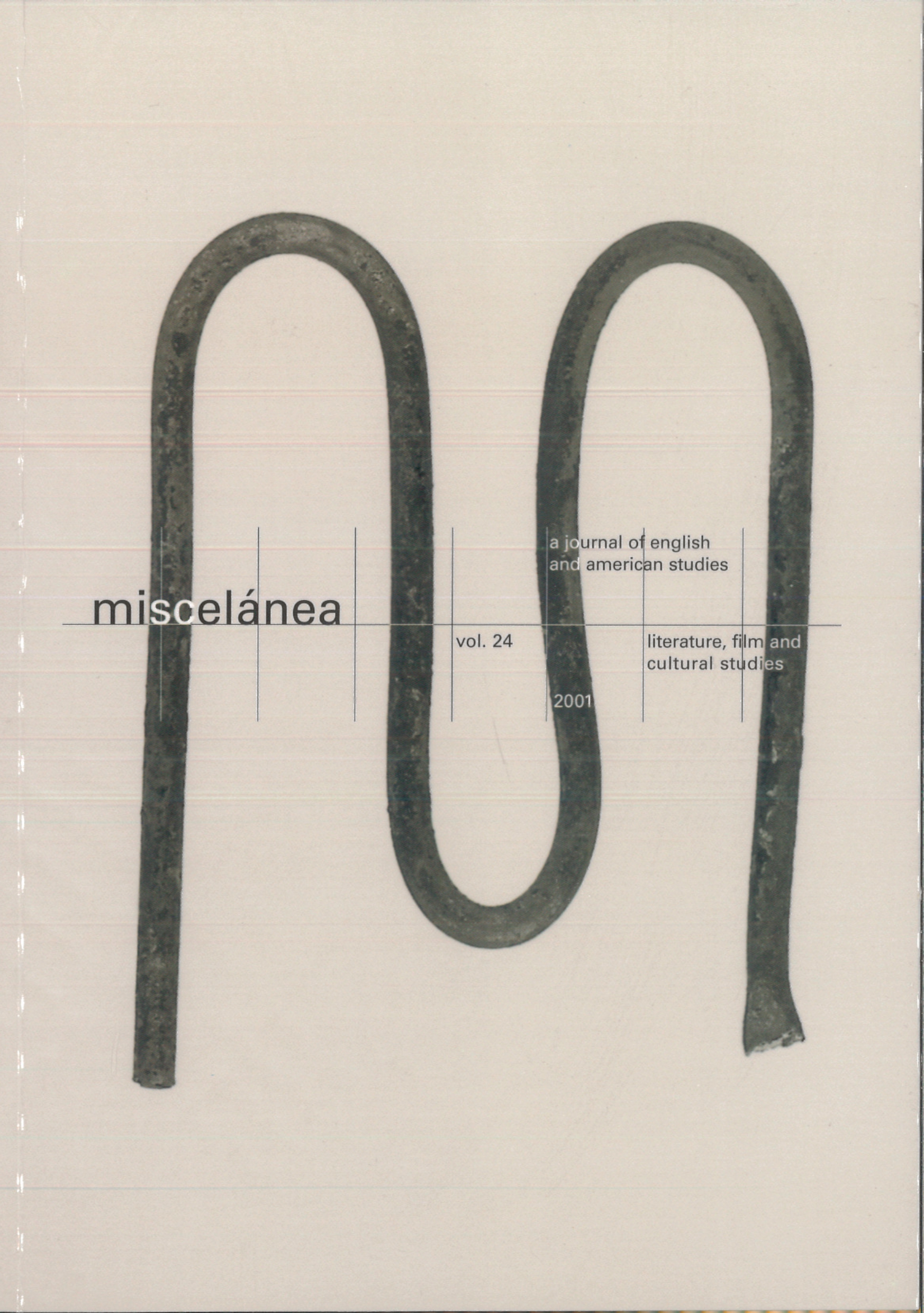Smart Princesses, Clever Choices. The Deconstruction of the Cinderella Paradigm and the Shaping of Female Cultural Identity in Adult and Children's Contemporary Rewritings of Fairy Tales
DOI:
https://doi.org/10.26754/ojs_misc/mj.200110296Palabras clave:
Cuentos de hada, Cenicienta, Estudios de género, Literatura infantil, ParodiaResumen
Como género híbrido o de transición, destinado tanto a niños como a adultos, el cuento de hadas ha sido objeto de investigación de varios enfoques críticos. Las críticas y escritoras feministas, por ejemplo, han colaborado en la denuncia crítica de los cuentos de hadas como narraciones que expresan principalmente valores patriarcales, aportando lecturas críticas que investigan la construcción social del género que implica relaciones de poder, así como escribiendo versiones para adultos y niños de los cuentos de hadas tradicionales en un intento de expresar una visión no sexista del mundo. Las reescrituras posmodernistas de Carter, Atwood y otros desafían los paradigmas culturales aceptados que postulan la pasividad, la resistencia y los celos como cualidades esenciales para que las mujeres sean asimiladas en la comunidad adulta. Un proceso similar está teniendo lugar actualmente en la literatura infantil, donde se detecta una tendencia creciente a volver a contar historias de princesas que prescinden de tramas dominadas por el matrimonio y de la ecuación tradicional entre belleza y bondad. En estas reescrituras, el discurso de los cuentos de hadas se convierte en emancipador e innovador, en lugar de ser un refuerzo de la cultura patriarcal.
Descargas
Referencias
BINCHY, Maeve. 1985. "Cinderella Re-examined". -. 2000. Cinderellis and the Glass Hill. New In Rapunzel's Revenge. Fairytales for York: Harper Collins. Feminists. Dublin: Attic Press: 57-64.
BOTTINGHEIMER, Ruth B. 1986. Grimms' Bad Girls and Bold Boys. The Moral Vision of the Tales. New Haven and London: Yale U. P.
CARSON LEVINE, Gail. 1996. Ella Enchanted. New York: Harper Collins .
CARTER, Angela. 1993. "Ashputtle: or, The Mother's Ghost". In Haase, Donald. (ed.). The Reception of Grimms' Fairy Tales. Responses, Reactions, Revisions. Detroit: Wayne State U.P.: 301-303.
CASHDAN, Sheldon. 1999. The Witch Must Die. How Fairy Tales Shape Our Lives. New York: Basic Books.
DONAGUE, Emma. 1997. "The Tale of the Shoe". In Kissing the Witch. London: Hamish Hamilton.
DOWLING, Colette. 1981. The Cinderella Complex. Women's Hidden Fear of Independence. New York: Summit Books.
DUNDES, Alan. (ed.). 1982. Cinderella. A Folklore Casebook. New York and London: Garland.
GARNER, James Finn. 1994. "Cinderella". In Politically Correct Bedtime Stories. New York: Macmillan: 31-38.
HAASE, Donald. 2000. "Feminist Fairy-Tale Scholarship: A Critical Survey and Bibliography". Marvels and Tales 14(1) (2000): 15-63.
JACKSON, Ellen. (1994) 1998. Cinder Edna. New York: Mulberry Books.
KOLBENSCHLAG, Madonna. 1979. Kissing Sleeping Beauty Good-Bye. Breaking the Spell of Feminine Myths and Models. S. Francisco: Harper and Row.
LEE, Tanith. 1993. "When the Clock Strikes". In Red as Blood (or Tales From the Sisters Grimmer). New York: Daws Books: 39-54.
MINTERS, Frances. 1994. Cinder-Elly ("Puffin Books"). Harmondsworth: Penguin.
MORETTI, Franco. 1986. II romanzo di formazione. La gioventu come forma Chapel Hill, N.C: Lollipop Power. simbolica de/la modernita nella narrative moderna. Milano: Garzanti. (English tr. 2000. The Way of the World: the Bi/dungsroman in European Culture. London: Verso).
MUNSCH, Robert. (1980) 1999. The Paper Bag Princess. New York: Scholastic.
NESBIT, Edith. (1900) 1985. The Last of the Dragons and Some Others. Harmondsworth: Penguin.
PATERSON, Katherine. 2000. The Wide-Awake Princess. New York: Clarion Press.
PHILIP, Neil. 1989. The Cinderella Story. The Origins and Variations of The Story Known as "Cinderella". Harmondsworth: Penguin.
RALPH, Phyllis C. 1993. "Beauty and the Beast: Growing Up with Jane Eyre". In Long Hoeveler, Diane and Beth Lau. (eds.). Approaches to Teaching Bronte's Jane Eyre. New York: The Modern Language Association of America: 56-61.
SCHENDA, Rudolf. 1986. "Telling TalesSpreading Tales: Change in the Communicative Forms of a Popular Genre". In Bottingheimer, Ruth. (ed.). Fairy Tales and Society: Illusion, Allusion, and Paradigm. Philadelphia: University of Pennsylvania Press: 75-94.
SHORTO, Russell. 1990. Cinderella. The Untold Story. New York: Birch Lane.
STONE, Kay. 1975. "Things Walt Disney Never Told Us". In Farrer, Claire R. (ed.). Women and Folklore. Austin, TX: University of Texas Press: 42-50.
TATAR, Maria. 1987. The Hard Facts of the Grimms' Fairy Tales. Princeton: Princeton U. P.
-. 1992. Off With Their Heads! Fairy Tales and the Culture of Childhood. Princeton: Princeton U. P.
THOMPERT, Ann. 1977. The Clever Princess. Chapel Hill, N.C: Lollipop Power.
THALER, Mike. 1997. Cinderella Bigfoot. New York: Scholastic.
WALL, Barbara. 1991. The Narrator's Voice. The Dilemma of Children's Fiction. London: Macmillan.
WANNING HARRIES, Elizabeth. 2001. Twice Upon a Tale. Women Writers and the History of the Fairy Tale. Princeton: Princeton U. P.
WARNER, Marina. 1995. From the Beast to the Blonde. On Fairy Tales and Their Tellers. London: Vintage.
WILLIAMS, Jay. 1978. The Practical Princess and Other Liberating Fairy Tales. London: The Bodley Head.
WOOD, Naomi. 1996. "Domesticating Dreams in Walt Disney's Cinderella". The Lion and the Unicorn 20 (1) (1996): 25-49.
YoLEN, Jane. 1982. "America's Cinderella". In Dundes, Alan. (ed.). Cinderella. A Folklore Casebook. New York and London: Garland.
-. 2000. "Cinder Elephant". In Datlow, Ellen and Terry Windling. (eds.). A Wolf at the Door and Other Retold Fairy Tales. New York: Simon and Shuster: 17-29.
ZIPES, Jack. 1979. Breaking the Magic Spell. Radical Theories of Folk and Fairy Tales. Austin: University of Texas Press.
—. 1986. Don't Bet on the Prince. Contemporary Feminist Fairy Tales in North America and England. New York: Routledge.
—. (ed.). 1987. Victorian Fairy Tales. New York and London: Methuen.
—. 1991. Fairy Tales and the Art of Subversion. The Classical Genre for Children and the Process of Civilization. New York: Routledge.
—. 2000. "The Contamination of the Fairy Tale". In Sticks and Stones. The Troublesome Success of Children's Literature from Slovenly Peter to Harry Potter. New York and London: Routledge: 99-123.
Descargas
Publicado
Número
Sección
Licencia

Esta obra está bajo una licencia internacional Creative Commons Atribución-NoComercial 4.0.


